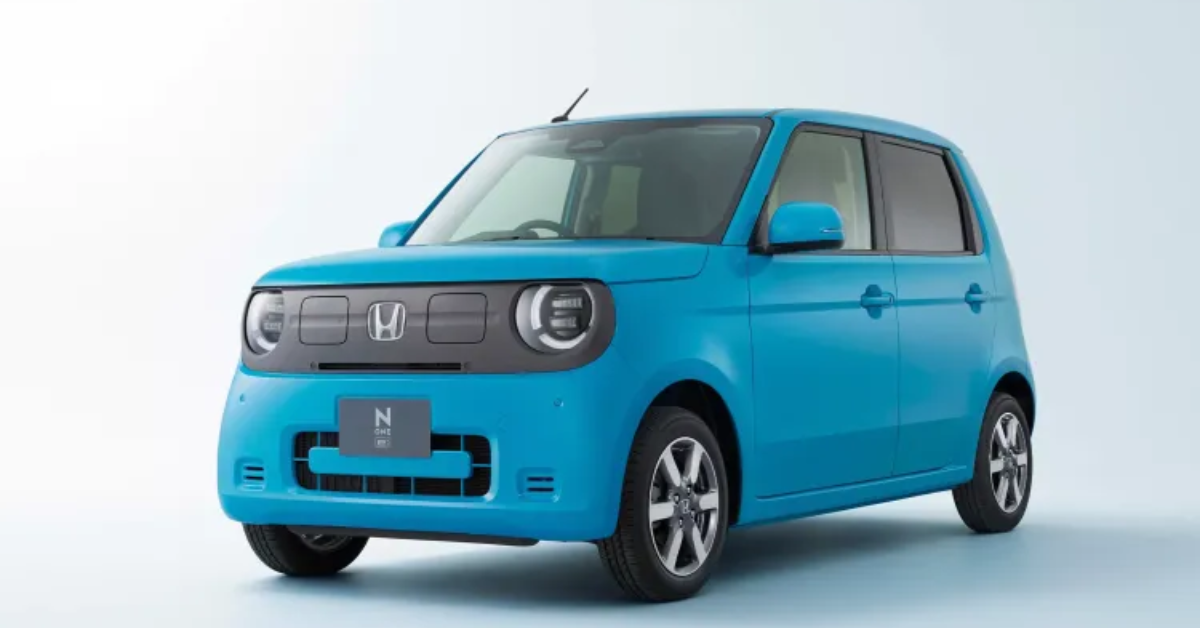The electric vehicle revolution is getting smarter, and Honda’s latest entry into the EV world is proof. With the unveiling of the Honda N-One e in Japan, the brand has taken its beloved kei car and transformed it into a modern, compact electric vehicle with impressive functionality, including the ability to power home appliances during outages. As Japan moves toward energy resilience and eco-friendly mobility, the N-One e delivers a perfect blend of tradition, innovation, and urban practicality.
Let’s dive deep into what makes the Honda N-One e a game-changer in the city EV segment.
🔋 Electric Power Meets Daily Practicality
The Honda N-One e maintains the recognizable retro-modern aesthetic of the petrol-powered N-One but swaps its internal combustion engine for an electric drivetrain. Honda has not only reworked the internals but also added features that reflect the evolving role of EVs in our daily lives — especially home-to-vehicle (H2V) and vehicle-to-home (V2H) power sharing.
This small EV is primarily designed for Japan’s urban population who need a compact car with a light environmental footprint. However, its true innovation lies in its ability to function as a power source during emergencies — ideal for regions like Japan that are prone to natural disasters such as earthquakes and typhoons.
⚙️ Performance and Range: Built for Urban Life
While Honda hasn’t yet revealed the complete technical specifications, early announcements suggest:
- Range: Estimated between 200-250 km on a single charge, ideal for city commutes.
- Motor Output: Expected to deliver around 60-80 hp, with quick acceleration for short sprints.
- Top Speed: Electronically limited to ensure safety in dense traffic.
- Charging Time: Fast charging capability will likely allow 80% charge in under 45 minutes, with standard AC charging completing a full charge in around 6-8 hours.
The N-One e isn’t built for long-distance highway runs, but it’s the perfect match for daily commutes, grocery runs, and school pick-ups — all while staying green and efficient.
🌟 Design: Retro Charm with Futuristic Touches
The 2026 Honda N-One e retains the iconic boxy silhouette of its predecessor, inspired by the classic N360. The exterior gets minor tweaks to signal its EV identity:
- New LED signature lights
- Blue-accented Honda badges
- Aerodynamic wheels
- Fresh color options including pastel tones and matte finishes
Inside, Honda has focused on minimalism and smart utility. Expect a digital instrument cluster, a floating touchscreen infotainment system, and eco-friendly upholstery materials. The cabin space is thoughtfully designed to maximize comfort for four passengers, despite the car’s compact footprint.
🔌 Home-Powering Tech: More Than Just an EV
One of the standout features of the N-One e is its Vehicle-to-Home (V2H) technology. In simple terms, the car can send electricity back into your home during power outages. This is made possible by Honda’s Power Exporter system, which connects the EV to a home energy management system.
Benefits include:
- Backup electricity for essentials: lights, fridge, fans, etc.
- Disaster preparedness: useful during natural calamities.
- Smart grid compatibility: helps reduce electricity load during peak hours.
In essence, the N-One e turns into a mini power plant on wheels — redefining the role of a family car.
📱 Technology and Features
Honda has packed the N-One e with intelligent features that make urban driving convenient and safe:
- Honda Sensing ADAS Suite: Includes adaptive cruise control, lane keeping assist, auto emergency braking, and traffic sign recognition.
- One-Pedal Driving: A regenerative braking system for smoother driving in city conditions.
- Connected Car Features: Remotely control AC, charge status, and lock/unlock via smartphone.
- OTA Updates: Ensuring your car software is always up to date.
With all this tech, the N-One e becomes more than a car — it’s a smart mobility companion.
💰 Expected Pricing and Launch
While Honda has confirmed the debut of the N-One e in Japan, pricing is yet to be formally disclosed. However, industry insiders expect it to start around ¥2.5 to ¥3 million (roughly ₹14 to ₹17 lakhs in India if converted), which is quite reasonable for a tech-rich EV.
Honda hasn’t announced plans for a global rollout yet, but markets like India, Thailand, and Indonesia could eventually see this model due to growing demand for urban EVs.
🌍 Environmental Impact
Honda is committed to achieving carbon neutrality by 2050, and the N-One e is part of this broader goal. It emits zero tailpipe emissions, reduces urban air pollution, and supports cleaner energy consumption through smart home integration.
Additionally, its small size reduces material usage in manufacturing, contributing to a lower overall environmental footprint.
🏁 Final Verdict: Small Car, Big Potential
The Honda N-One e is not just another electric city car — it’s a bold statement that mobility and energy are increasingly interlinked. With futuristic home-powering features, a charming design, and Honda’s reliability, it stands out as a smart, sustainable solution for modern living.
Whether you’re a young professional, a senior citizen, or a family of four living in a busy city, the N-One e promises to offer eco-conscious mobility with a practical edge. And in an age where every watt and kilometer counts, this little EV might just be the future of urban driving.
